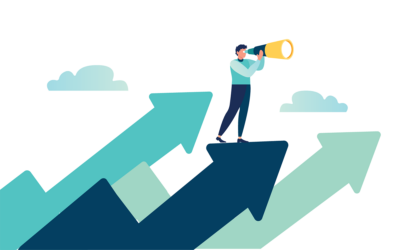Work and play have traditionally been separated from one another; two distinct concepts that rarely, if ever, overlapped. But it turns out that combining the two—that is, infusing an element of play into the workplace—can really benefit job satisfaction and overall performance. Sales organizations, especially, can benefit from incorporating game mechanics, since salespeople tend to be naturally motivated by competition. Research from Aberdeen reveals that 31 percent more first-year reps achieve quota when supported with game mechanics. If implemented correctly, gamification can educate and influence the behavior of your sales team, adding another layer of rewards to the traditional drives, and naturally supporting collaboration. Here are 3 ways that gamification promotes a high performing sales culture.
Turning Learners into Players
The right training is critical to the performance of your sales team, but it’s probably not something that they immediately associate with fun. You can gain buy-in from your reps for training and increase engagement by incorporating elements of play and competition into the curriculum. Points, badges, level progression, and friendly rivalry can actually make the training enjoyable, and more importantly, memorable. Reps that are motivated towards participation will comprehend the training material more efficiently, increasing the likelihood for applying the new skills once they return to work. Incorporate gamification into sales training in these three ways:
- Introducing New Concepts: Don’t just introduce something new to your sales team and assume they’ll get it. Instead, find ways to incentivize new concepts.
- Product Training: For many salespeople, the idea of having to learn the technical features of a new product is draining. Gamify the process to make it more memorable.
- Gamification in Reinforcement: Involve front-line sales managers in rewarding salespeople who implement classroom training in the field.
Balancing Competition and Collaboration
Competition is an excellent motivator for sales teams, but left unchecked it can stifle idea sharing and collaboration. You want to promote healthy competition while encouraging your team to support each other and share in each other’s successes—and play is a great way to achieve that balance. A gamification initiative can be a healthy outlet for friendly rivalries, while simultaneously fostering teamwork. When you’re designing incentive challenges, intentionally assign teams with varying seniority levels. Opening up the gates between management and senior and junior reps will increase unification and encourage knowledge sharing across the organization. While cash is King, financial incentives aren’t the only path to creating engaged and successful sellers. Salespeople are also commonly motivated by competition with other team members, making gamification a logical fit for the sales function: it represents another dimension in which naturally competitive team members can one-up each other. And “the team that plays together stays together” mentality will contribute to a culture of collaboration long after the competition is over.
Driving Sales Performance
Adding a chance for your sales team to have some fun at work certainly keeps everyone happy, but the bottom line is that it’s good for business. According to Salesforce, 71 percent of companies that implemented gamification saw an 11 to 50 percent increase in sales performance. Internal recognition for strong performance is incredibly important to the sales function, and a gamification initiative can provide new data points to recognize individual and team achievements. Keep stakeholders aware of which employees are performing at the highest level, and show results on the staff intranet and within your CRM. You’ll drive performance with friendly competition, while encouraging your team’s CRM usage. Millennials aren’t the only members of your team that will be motivated by the addition of game mechanics. Infusing play into the workplace promotes a positive culture and reduces stress while bringing your team together and driving them towards high performance.
NOTE: Our sales training tools are designed to make your life easier. Use them to your advantage.
Finding and Keeping Top Sales Talent
According to our research, only 41% of senior sales leaders and 42% of sales managers have confidence in their organization’s ability to attract and hire top sales talent. That’s less than half! Download this whitepaper to help you hedge your hiring and selection bets.




